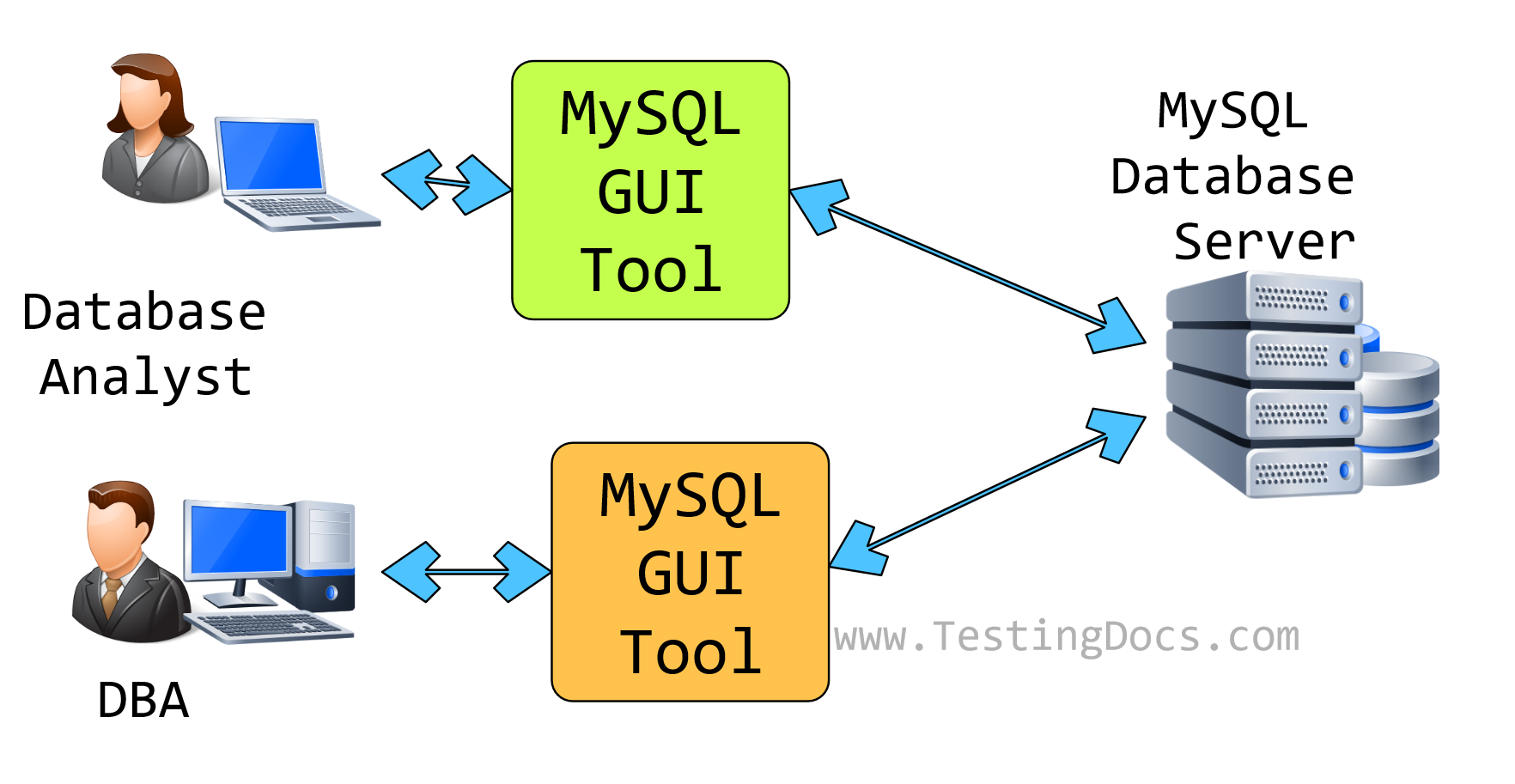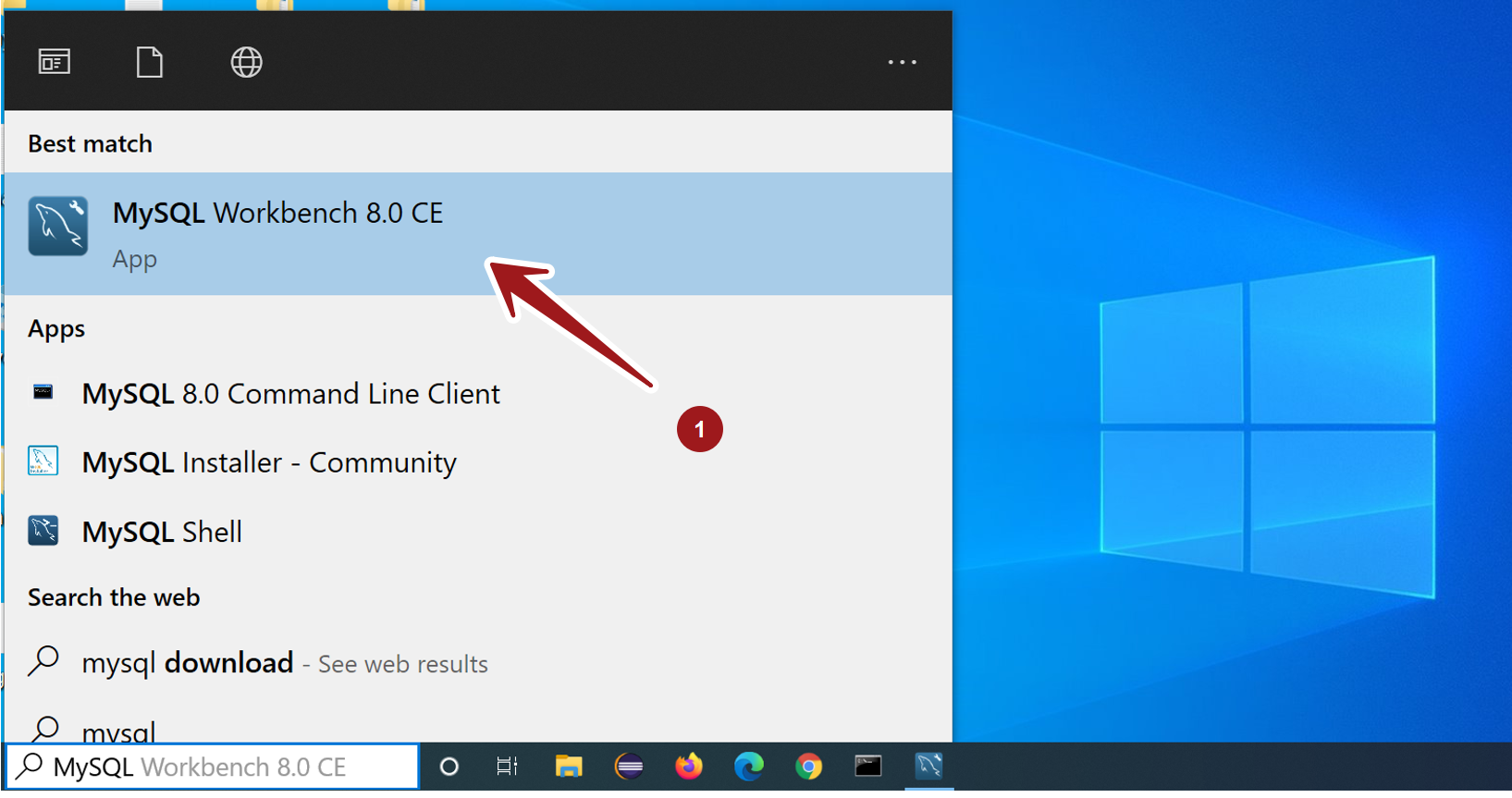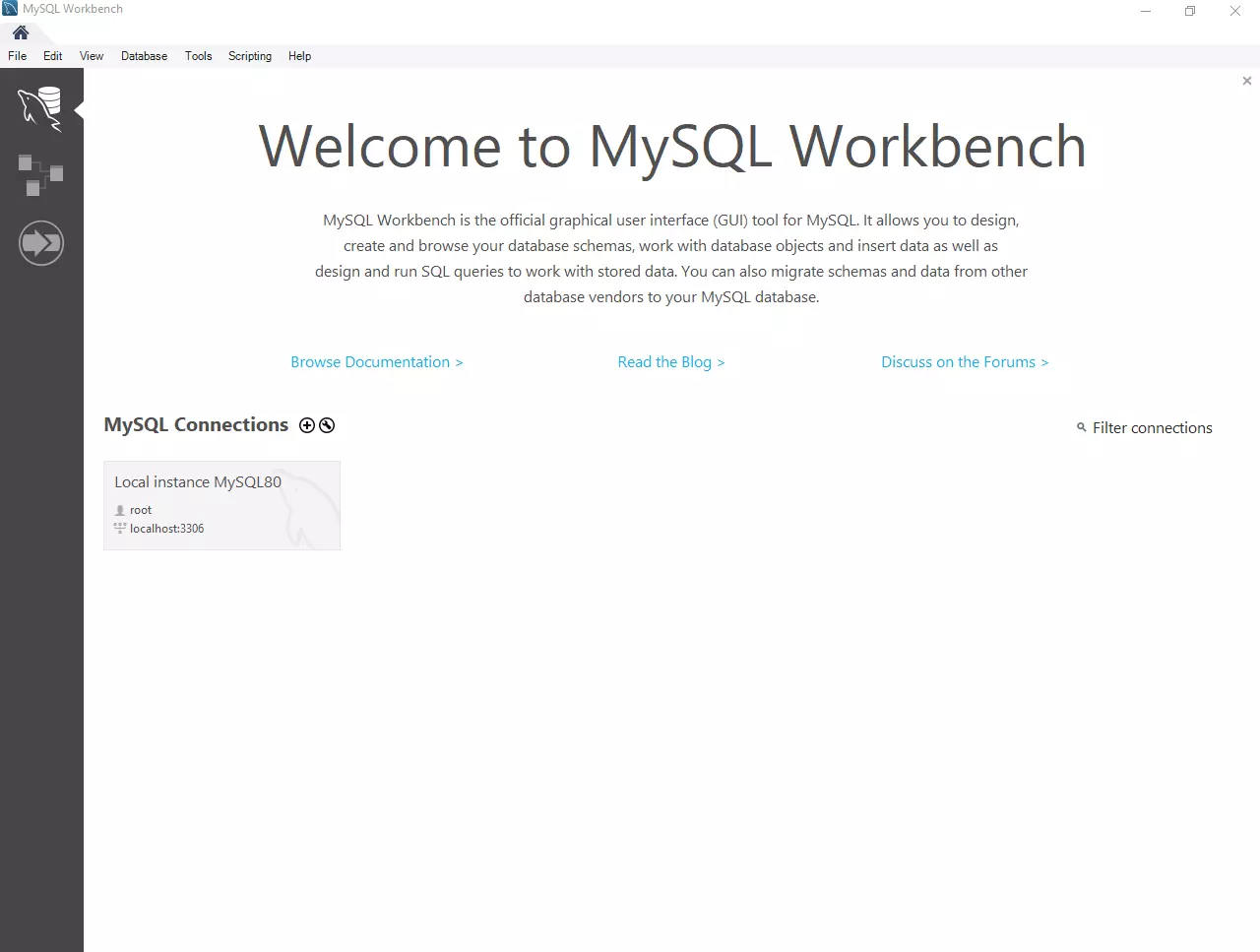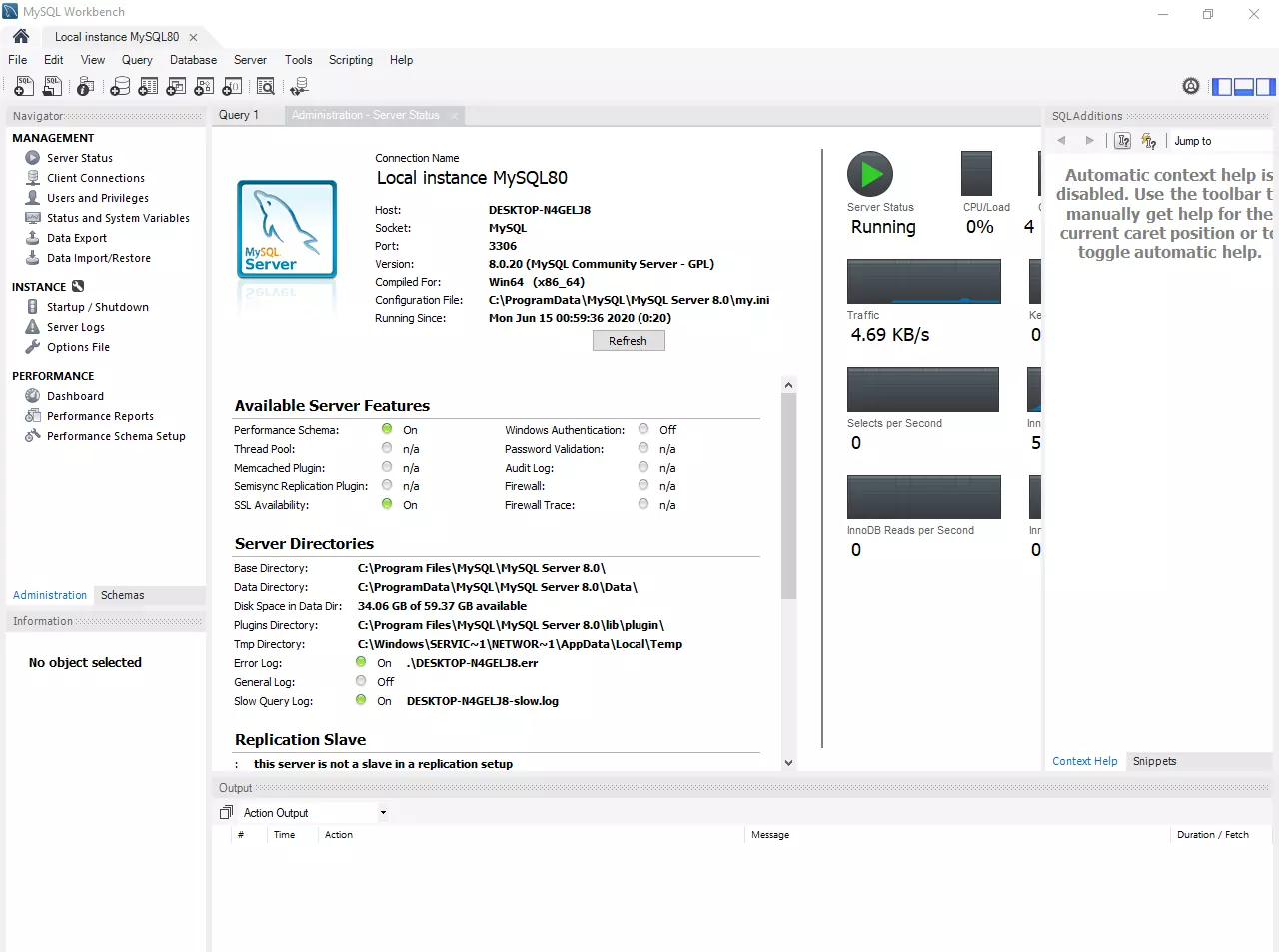MySQL Workbench Overview
MySQL Workbench
MySQL Workbench is the official GUI tool for working with the MySQL database. It is a database development, modeling, and administration tool.

We can design and create database schemas, EER diagrams, etc. We can connect to MySQL instances, create database objects, generate SQL scripts, run SQL queries and scripts, insert data, and much more. The tool also supports migration wizards from other RDBMS products.
Install MySQL Workbench
Steps to install MySQL Workbench on Windows 11 operating system can be found at:
https://www.testingdocs.com/install-mysql-workbench-on-windows-11/
How to Launch?
Search for the MySQL Workbench in the search bar.
Click on the MySQL Workbench 8.0 CE app to launch the tool.

We can also launch the tool from the Start Menu on Windows 10 operating system.
Click on the Start Menu button and follow the below menu path:
Start Menu >> MySQL >> MySQL Workbench 8.0 CE
This will launch the Welcome screen. We can find the existing MySQL connections on this screen.

The sidebar consists of
- MySQL Connections
- MySQL Models
- Migration Wizard
Click on the MySQL connection to connect to the database server instance. By default, SQL Editor will be launched.
Workbench Navigator
We can switch and navigate to new tabs using Navigator. The Navigator consists of three main components:
- Management
- Instance
- Performance

Management
Using this tab, we can perform Management activities. We can check the Server Status, Client connections, MySQL Users, System Variables, etc. W can also Import and Export data.
Instance
Activities that are related to MySQL instance can be performed. Instance Startup and Shutdown, view server logs and options.
Performance
The performance tab allows us to view performance reports and other performance metrics.
SSL Wizard
MySQL Workbench SSL wizard will help to generate SSL certificates and self-signed keys(for self-signed certificates) that are required for the MySQL database server to enable SSL.
MySQL Tutorials
MySQL Tutorials on this website:
https://www.testingdocs.com/mysql-tutorials-for-beginners/
